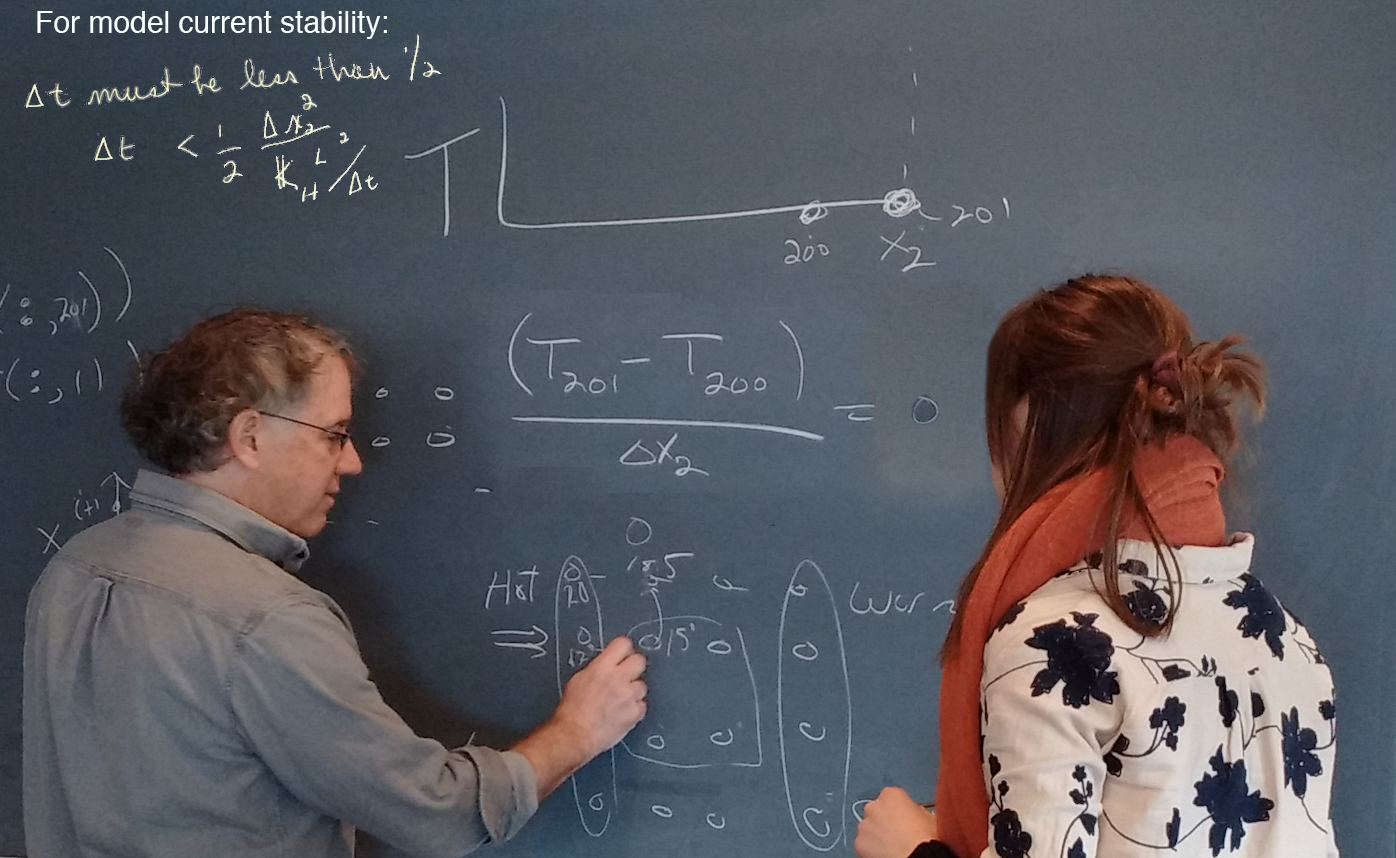Class on March 4 2019
Students warmed up with a terms expansion exercise.
Chris explained that the focus of class would now change from a one-dimensional consideration to a two-dimensional consideration of heat flow and the energy equation.
Remembering that diffusion has two popular definitions:
1. the spreading of something more widely,
2. the intermingling of substances by the natural movement of their particles,
Chris reviewed the Eulerian diffusion (particle movement) component to divergence (spreading) in a heat flux:

Students were reminded of the 2-D magnitude of terms exercise they considered last class:

Remembering that advection has but one popular definition:
the transfer of heat or matter by the flow of a fluid, especially horizontally in the atmosphere or the sea,
Chris reviewed the Eulerian advection component and its added complexity to a 2-D magnitude of terms exercise:

Chris explained how advection works via a diagram of water parcel nodes, explaining how the change in temperature has to be small enough to keep the computations stable. Since the magnitude of eddy in the vertical direction is much smaller than the lower, the criteria to satisfy references x2 (or x1) and the horizontal kappa:

and then asked students to perform an advection simulation exercise as a game that mimicked the technique demonstrated on the blackboard:
Students moved beads like:

to get final results which Chris suggests should be:
Chris pointed out that the homework assignments would break two-dimensional eddy computation into two pieces. Homework #5 would apply diffusion to a cross-section of a water body (using x2 as L and x3 as depth), while homework #6 would add advection as seen in class today.
Chris explained that the focus of class would now change from a one-dimensional consideration to a two-dimensional consideration of heat flow and the energy equation.
Remembering that diffusion has two popular definitions:
1. the spreading of something more widely,
2. the intermingling of substances by the natural movement of their particles,
Chris reviewed the Eulerian diffusion (particle movement) component to divergence (spreading) in a heat flux:

Students were reminded of the 2-D magnitude of terms exercise they considered last class:

Remembering that advection has but one popular definition:
the transfer of heat or matter by the flow of a fluid, especially horizontally in the atmosphere or the sea,
Chris reviewed the Eulerian advection component and its added complexity to a 2-D magnitude of terms exercise:

Chris explained how advection works via a diagram of water parcel nodes, explaining how the change in temperature has to be small enough to keep the computations stable. Since the magnitude of eddy in the vertical direction is much smaller than the lower, the criteria to satisfy references x2 (or x1) and the horizontal kappa:

and then asked students to perform an advection simulation exercise as a game that mimicked the technique demonstrated on the blackboard:

Students moved beads like:

to get final results which Chris suggests should be:
time W C R 1 6 1 1 2 6 2 1 3 6 3 2 4 6 4 3 5 6 5 4 6 6 6 5 7 6 6 6 8 6 6 6 9 6 6 6 10 6 6 7 11 6 7 6 12 6 6 6
Chris pointed out that the homework assignments would break two-dimensional eddy computation into two pieces. Homework #5 would apply diffusion to a cross-section of a water body (using x2 as L and x3 as depth), while homework #6 would add advection as seen in class today.

